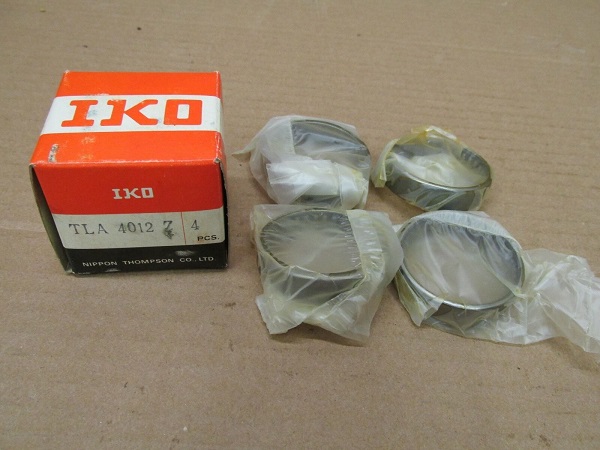Bearing failure is a common problem during bearing operation. The common forms of bearing failure include fatigue failure, wear failure, corrosion failure, galvanic wear, plastic deformation and cracks. Today Eric Bearing Limited will explain IKO bearings to you Invalidation form, I hope to help everyone.
1. Fatigue failure
This kind of bearing fatigue failure is a form of failure surface, mainly manifested in the initiation, propagation and fracture process of fatigue cracks, and the long-term effects of load failures produced by the alternate metal. The main forms of fatigue failure are subsurface fatigue and initial surface fatigue.
The main forms of subsurface fatigue are: fatigue spalling phenomenon, edge partial load, indentation and impact.
The main forms of initial surface fatigue are: the process of wear caused by improper lubrication.
The causes of the cracks are in two aspects:
(1) On the surface, this is due to the effect of external load caused by the cyclical changes in the plastic deformation of the working surface and the contact stress of the strain-hardened surface, and finally small cracks develop from the inner surface, between the two The formation of surface cracks between the work surface, due to the penetration of lubricant on the work surface, the opening force, severely hit the wall, forcing the crack to advance.
(2) From the surface layer, under repeated pressure, the contact of the surface, the initial cracks at a certain depth of the exposed surface, and the angle along the surface direction, to a certain depth, from the surface of the contact surface, and Go beyond the surface, and eventually form an eclipse, leaving a horse pit.
On the surface, it is still from the cracks in the surface layer. These two goals (parts carburization, quenching and other surface heat treatment, afterwards, if there are uneven hardness, structure, and non-uniform internal stress and other disadvantages, then the contact stress is normal Under the influence of the opposite underground cracks, if the surface quality of the parts is poor, there is a defect (oxidation, decarburization), friction or lubrication is not good, from the surface cracks. IKO TLA 4012 Z needle roller bearings in stock , if you interested , pls click here :

2. Wear failure
Wear failure refers to the failure caused by the continuous wear of the metal on the working surface caused by the relative sliding friction between the surfaces. Continued wear and tear will cause gradual damage to bearing parts, and eventually lead to loss of IKO bearing dimensional accuracy and other related problems. Wear may affect the shape change, the increase of the fit gap and the change of the working surface topography, which may affect the lubricant or make it contaminate to a certain degree, causing the lubrication function to be completely lost, thus causing the bearing to lose rotation accuracy and even fail to operate normally. Wear failure is one of the common failure modes of various bearings.
According to the form of wear, it can be divided into the most common abrasive wear and viscous wear.
Abrasive wear refers to the wear caused by foreign hard particles or hard foreign matter or metal surface wear debris between the working surfaces of the bearing and the relative movement of the contact surfaces. It often causes furrow-like scratches on the working surface of IKO bearings. Hard particles or foreign matter may come from the inside of the host or from other adjacent parts of the host system, which are sent into the bearing by the lubricating medium.
Viscous wear refers to the uneven force on the friction surface due to microscopic protrusions or foreign objects on the friction surface. When the lubrication conditions are severely deteriorated, the local friction generates heat, which can easily cause local deformation of the friction surface and friction microscopic welding. At this time, the surface metal may be partially melted, and the force on the contact surface tears the local friction welded point from the substrate and increases the plastic deformation. This adhesion-tear-sticky cycle process constitutes viscous wear. Generally speaking, slight viscous wear is called abrasion, and severe viscous wear is called bite.
Hot Tags: